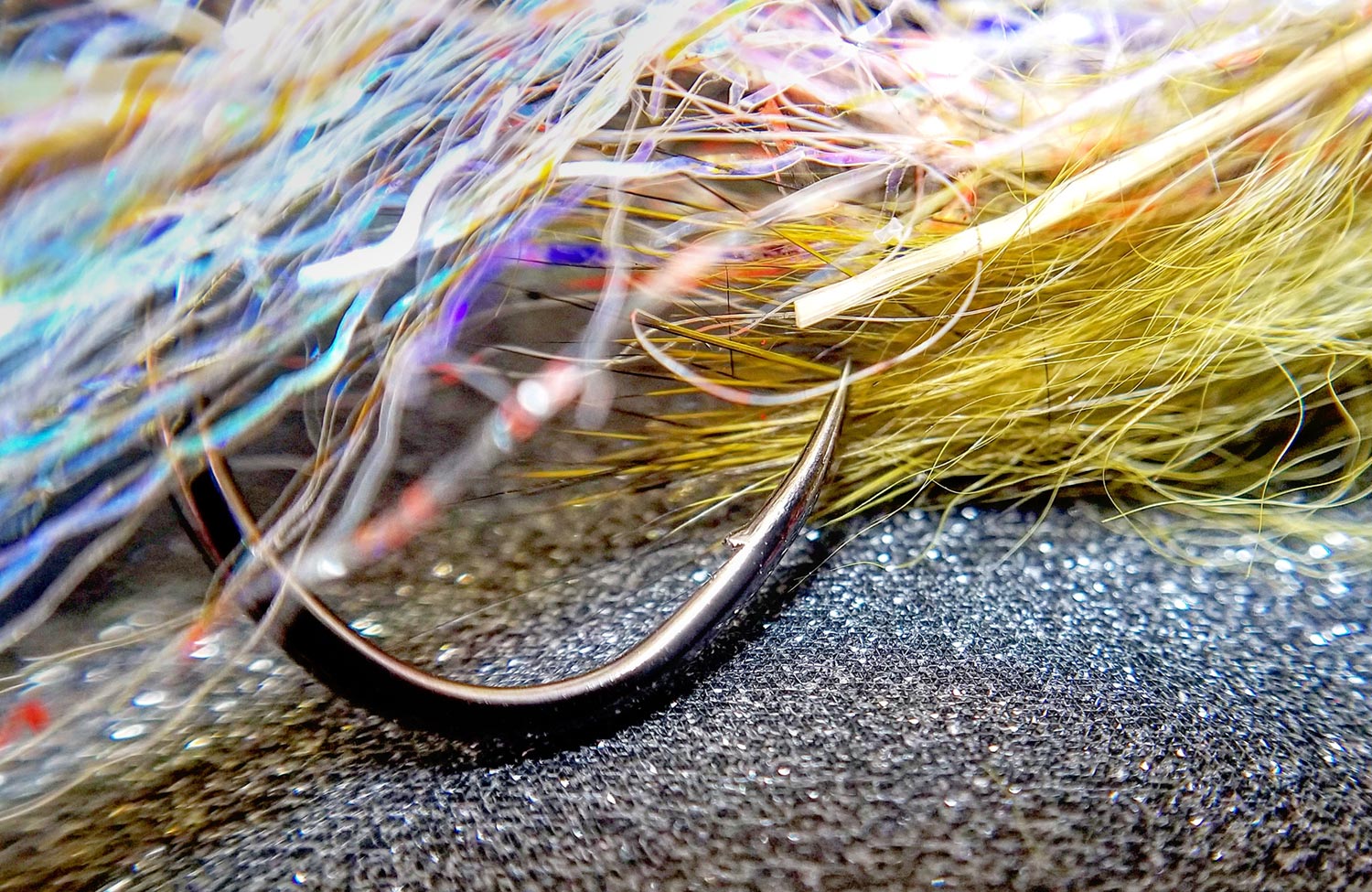By Bob Reece
Big streamers on big hooks equal big fish. Yes and no. Selecting the most effective hook helps determine the difference between getting a take and netting that same fish.
Many traditional streamer patterns were constructed on hooks with long straight shanks. The added distance provided by 2, 3 and even 4x shanks was used to create the longer profile of the food item that was being imitated. When Zonkers, Matukas and other classic patterns were created this style of hook was the most common available option. Longer shanked hooks are still frequently used and can be highly effective. As with all styles of hooks, do your research; they are not all created equally.
Hooks with shorter shanks require different material approaches to create the elongated profile of the larger prey items that streamers imitate. While this often brings about an adjustment in tying methods, it also helps to increase the odds of trout-to-net success. Shorter shanked hooks reduce the amount of leverage that can be applied by the fish. This is extremely beneficial when playing robust trout that streamers can produce. This reduction in leverage simultaneously decreases the chance of the hook being thrown lose by the fish.
In addition to hook length, the hook point angle should be taken into account when selecting hooks. Those that display an upturned or sideways canted point hold fish more effectively than hooks with points that run parallel to the hook shank. I state this difference in conjunction with the assumption that the streamer hook is barbless of has had its barb compressed. Large streamer hooks have large barbs and can inflict serious damage to trout. If you’re goal is to catch and release, please take the time to crimp your barbs or fish barbless models.
Another important factor in this equation is hook point diameter.
This element, if over looked, can drastically alter the effectiveness of a pattern. Larger diameter hook points require more force to effectively set. This is especially true for the rigid jaw lines of large mature trout. For example, a wide diameter hook point fished on a light weight rod will often fail to connect with a typical trout set.
As you sit down to construct your next streamer pattern, sweat the small stuff. Time the needed time to evaluate the details of the hooks that you select. This small investment will increase the odds of large finned returns.
To see more of Bob Reece’s Fly Tying videos, click on the link below:
http://www.thinairangler.com/tying-videos
To experience the fly fishing solitude of Horse Creek Ranch, click on the link below:
http://www.thinairangler.com/horse-creek-ranch-fly-fishing
To step up your tying and fly fishing game, connect with Bob Reece are your Fly Coach through the link below:
http://www.thinairangler.com/fly-coach
Bob Reece Gink & Gasoline www.ginkandgasoline.com hookups@ginkandgasoline.com Sign Up For Our Weekly Newsletter!
Sign Up For Our Weekly Newsletter!

